From "big" to "fine", it accurately summarizes the core evolution of slitting and rewinding machines in modern manufacturing, especially in the wave of flexible manufacturing. It is no longer a simple auxiliary equipment of "large rolls divided into small volumes", but has been transformed and upgraded into an "efficiency engine" that drives the entire production process to develop in the direction of efficiency, flexibility and intelligence.
Below, we elaborate on how the slitting rewinder has completed this role change and become a key part of flexible manufacturing.
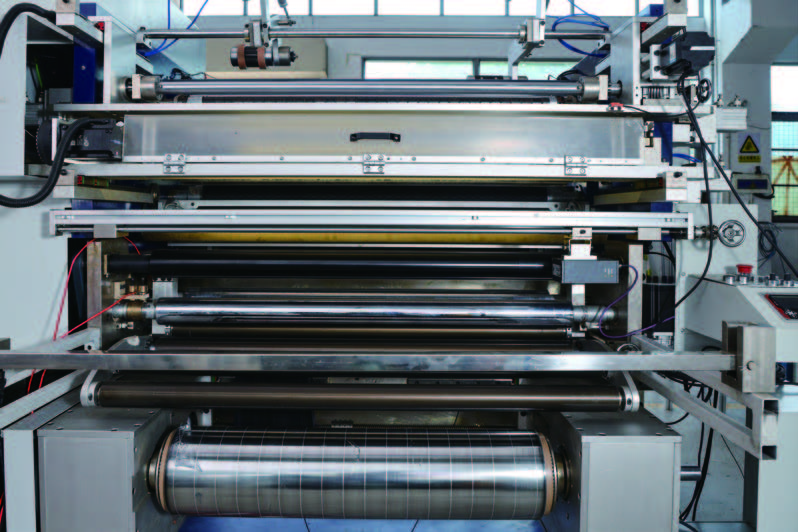
1. Traditional roles: the limitations and pain points of "big"
Traditional slitting and rewinding machines mainly solve the basic needs under economies of scale:
• Single purpose: Cut the master roll (e.g. paper, film, foil) into multiple narrower widths, or replace the core for easy subsequent transportation and use.
• Core indicators: speed, width, load-bearing - the pursuit of "bigger, faster".
• Positioning in rigid production: a standardized link at the end of a large-scale and low-variety production line. The equipment is bulky, and it takes a long time to change tools and adjust parameters, and it is not possible to respond quickly to changes.
In the face of flexible manufacturing demand, this kind of "big" and "stupid" equipment exposes obvious pain points:
1. Inefficient changeover: Replacing product specifications (such as different widths) requires manual adjustment of tool position, tension, and speed, which takes hours and cannot meet the production requirements of small batches and multiple batches.
2. Significant material waste: Every turn-on and adjustment generates a large amount of waste, which is costly for high-value materials such as optical films, lithium battery separators.
3. Quality depends on manual labor: The quality of slitting (such as burrs and neatness) is highly dependent on the operator's experience, making it difficult to ensure consistency and prone to hidden losses.
4. Information islands: The lack of data linkage with upstream (such as coating, casting production lines) and downstream (such as die-cutting, packaging processes) is a "black box" in the entire production process.
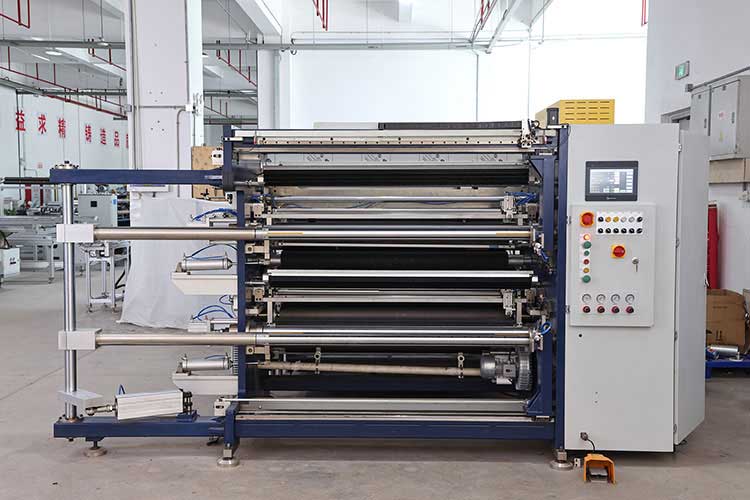
2. The evolution to "refinement": becoming the four pillars of the flexible manufacturing efficiency engine
To adapt to flexible manufacturing, modern slitting and rewinding machines have made a qualitative leap in precision, intelligence, automation, and connectivity.
Pillar 1: Extreme precision – guarantees quality and value
This is the core embodiment of "fine", which directly determines the qualification rate and value of the final product.
• High-precision tension control: The multi-stage closed-loop tension control system is adopted, from unwinding, traction to winding, the whole process is precisely controlled. This is crucial for stretch-sensitive materials (e.g., PE, CPP) and extremely thin materials (e.g., ≤3μm copper foil), effectively avoiding stretching, wrinkling, serpentine and other issues.
• Precise slitting technology: The linear motor drives the tool holder to replace the traditional manual screw adjustment, and through the HMI input parameters, the tool holder can be moved to the specified position automatically, quickly and accurately, and the positioning accuracy can reach ±0.1mm or even higher. Achieved "one-click production change".
• Microscopic Defect Detection: Integrated online visual inspection system (CCD/AVI) to monitor microscopic defects such as burrs, dust, and bright spots on the slitting edge in real time, and timely alarm or mark to achieve 100% quality control.
Pillar 2: High Automation – Improve efficiency and stability
Automation is the key to reducing human dependence and achieving "unmanned" operations.
• Automatic Tool Changer System: Multiple blade types and life management can be preset for automatic tool change and sharpening, reducing downtime and human intervention.
• Automated logistics interface: seamless docking with AGV/truss manipulator to realize automatic feeding of master coils, automatic unloading of finished coils, and automatic supply of coil cores, opening up a closed loop of logistics from raw material warehouse to finished product warehouse.
• Automatic jointing technology: non-contact jointing methods such as ultrasonic and electrostatic are used to realize the automatic splicing of unwinding and breaking materials and new coils to ensure production continuity.
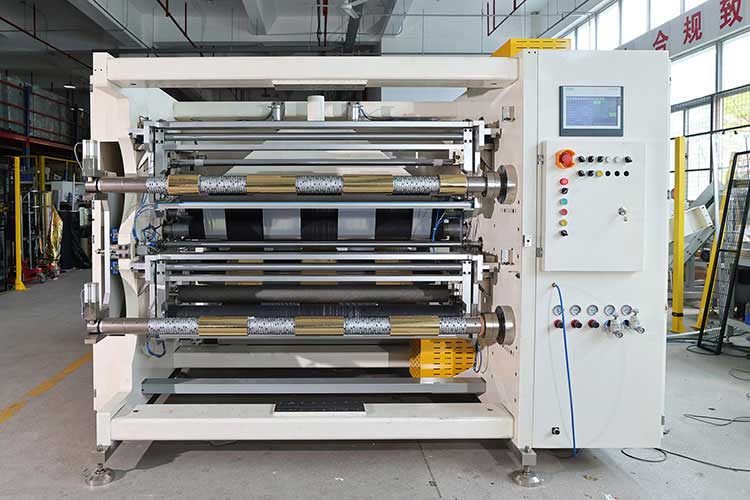
Pillar 3: Deep intelligence – Predict and optimize
This is the brain of the slitting machine that becomes the "engine".
• Integrated PLC and AI algorithms: The equipment has a powerful built-in PLC and process database that can store mature slitting process parameters (tension curves, speed matching, etc.) for hundreds of materials. When switching products, simply recall the recipe and all settings are done automatically.
• Preventive maintenance and digital twins: Real-time monitoring of vibration, temperature, and other data of key components (such as bearings and motors) through sensors, using AI algorithms to predict potential faults, arrange maintenance in advance, and avoid unplanned downtime. Digital twin technology simulates and optimizes the slitting process in a virtual space.
• Quality traceability system: Generate a unique "ID card" (QR code/RFID) for each finished volume, record its master roll information, slitting parameters, operators, quality data, etc., to achieve full life cycle traceability.
Pillar 4: Seamless connectivity – integration into Industry 4.0 systems
The slitting machine is no longer an island, but a smart node in a flexible manufacturing network.
• Support industrial communication protocols (such as OPC UA, MQTT): Capable of two-way data interaction with upper-level MES (Manufacturing Execution System) and ERP (Enterprise Resource Planning System).
• Receiving order instructions: After the MES issues a production order, the slitting machine automatically obtains information such as slitting specifications, quantities, and priorities, and automatically prepares for production.
• Feedback production status: Real-time reporting of equipment status (operation, shutdown, failure), output, material consumption, quality data, etc. to the MES to provide real-time basis for production scheduling and decision-making.
3. How to play the role of "efficiency engine"?
In the actual scenario of flexible manufacturing, this "lean" slitting and rewinding machine drives the overall efficiency improvement in the following ways:
1. Quickly respond to market changes: produce 10 kinds of films of different widths required by customer A in the morning, and switch to 5 kinds of special paper for customer B in the afternoon. The fast "one-click changeover" capability makes the production of small batches of orders economically viable.
2. Maximize material utilization: High-precision slitting and near-zero waste joint technology significantly reduce edge materials and start-up scrap, directly reducing raw material costs, which is especially important for precious metal materials such as electrode materials.
3. Improve overall equipment effectiveness (OEE): Significantly improve OEE metrics by reducing changeover time (improving availability), eliminating quality defects (improving performance rate), and enabling predictive maintenance (improving quality rate).
4. Empowering "mass customization": It is a bridge connecting continuous mass production (front-end casting, coating) and discrete small-batch customization (back-end die-cutting, packaging), efficiently and accurately transforming "large volumes" into "small volumes" to meet personalized needs, and is the core equipment to realize the "mass customization" model.
conclusion
The slitting rewinder has evolved from a bulky "physical" equipment to an "intelligent" system integrating precision machinery, automation, sensing technology, artificial intelligence and industrial Internet. Its transformation from "big to fine" is a microcosm of China's manufacturing industry moving from "manufacturing" to "intelligent manufacturing".
In the era of flexible manufacturing, it is no longer just the end of the production line, but a value conversion center that connects the previous and the next, through its extremely high flexibility, accuracy and intelligence, the scale advantage of the previous process is transformed into the precise supply capacity to meet the fragmented needs of the market, and truly becomes the "efficiency engine" that drives the efficient operation of modern factories.



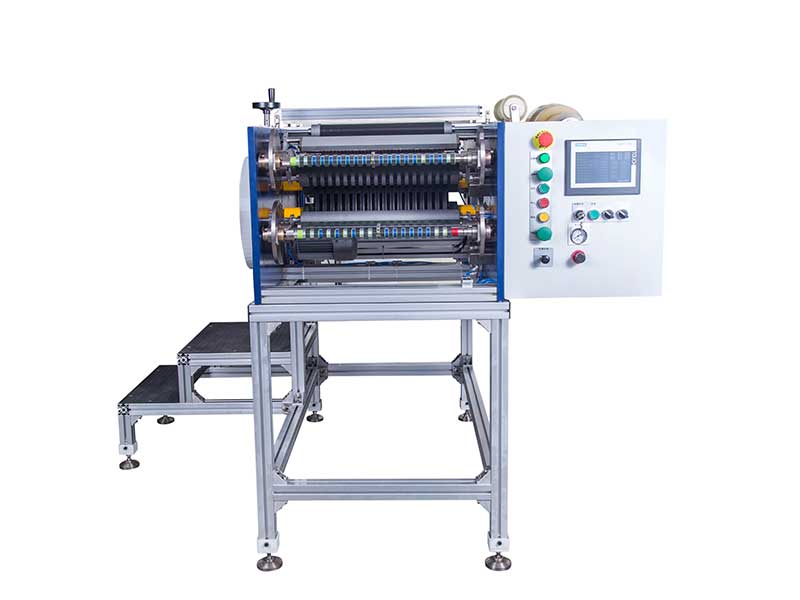
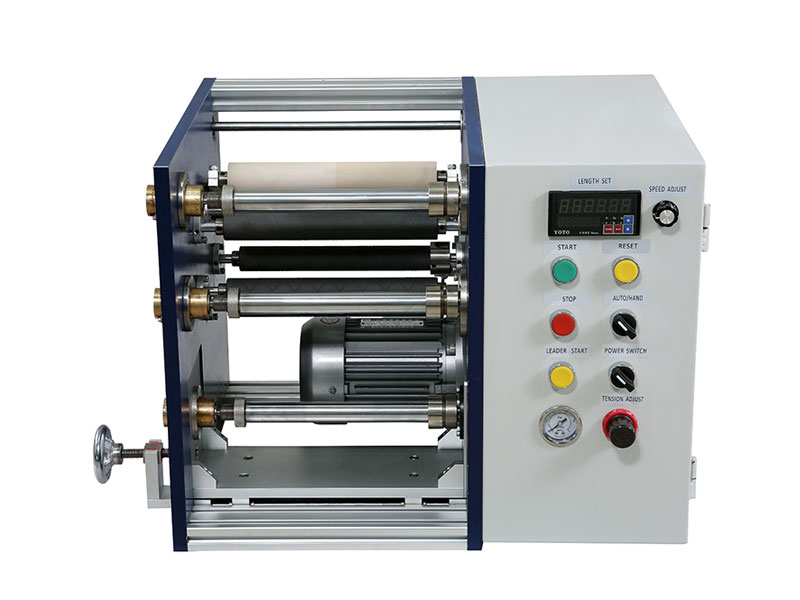
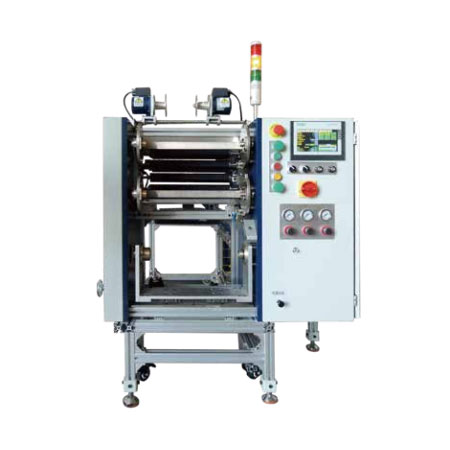
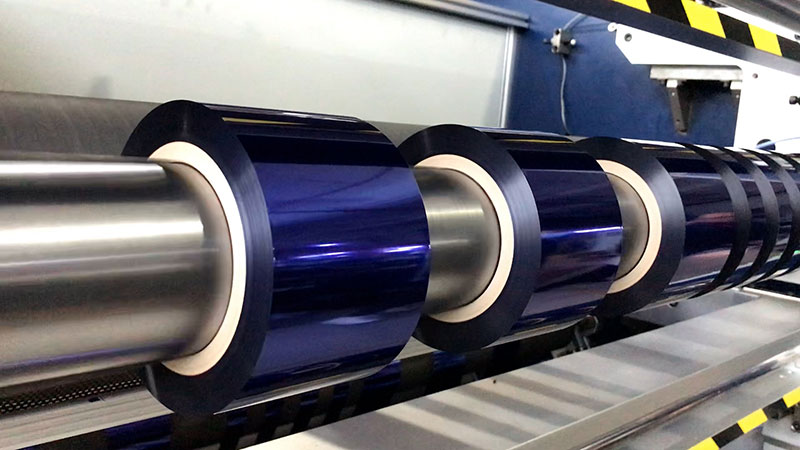
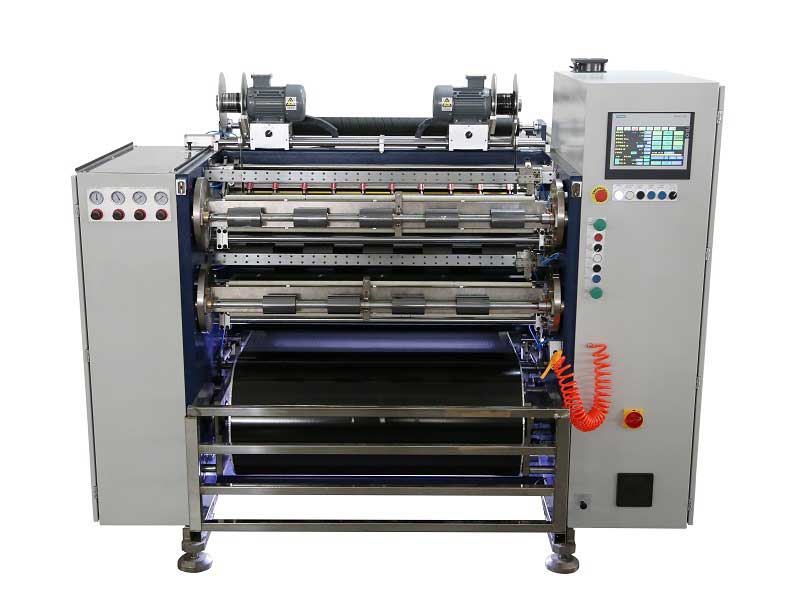 Automatic Thermal Transfer Ribbon Slitting Machine RSDS8 H PLUS
Automatic Thermal Transfer Ribbon Slitting Machine RSDS8 H PLUS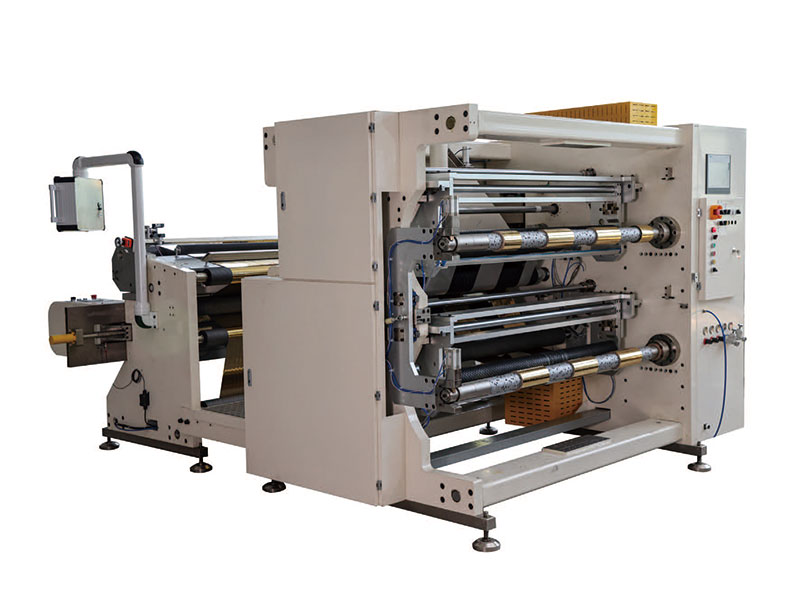 1400mm Hot Stamping Foil Slitting Machine
1400mm Hot Stamping Foil Slitting Machine Semi Automatic Thermal Transfer Ribbon Slitting Machine RSDS5 PLUS
Semi Automatic Thermal Transfer Ribbon Slitting Machine RSDS5 PLUS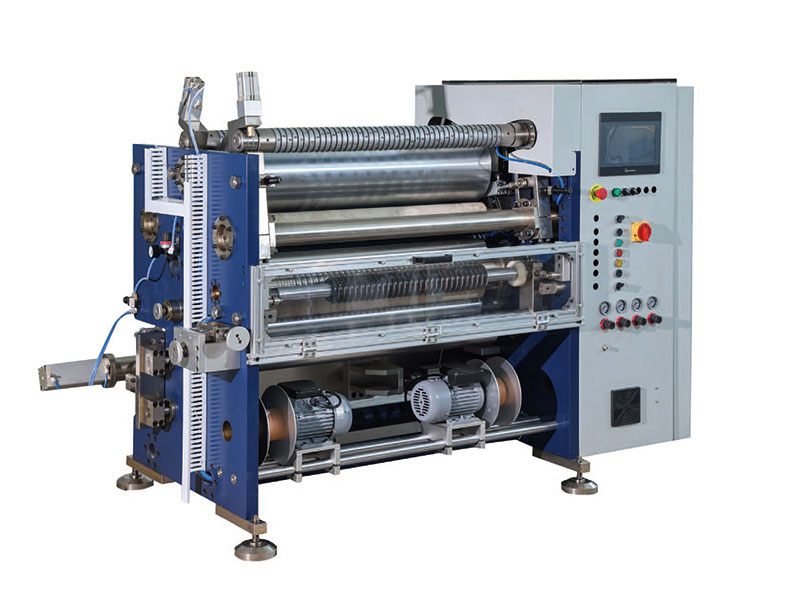 800mm Hot Stamping Foil Slitting Machine
800mm Hot Stamping Foil Slitting Machine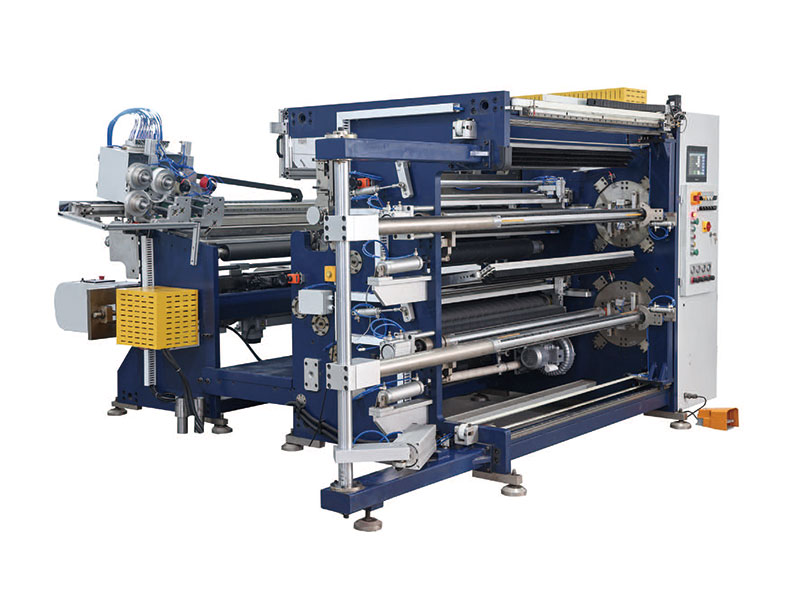 1350mm Hot Stamping Foil Slitting Machine
1350mm Hot Stamping Foil Slitting Machine New Energy Ultra-thin Film Slitting Machine For Capacitive Film
New Energy Ultra-thin Film Slitting Machine For Capacitive Film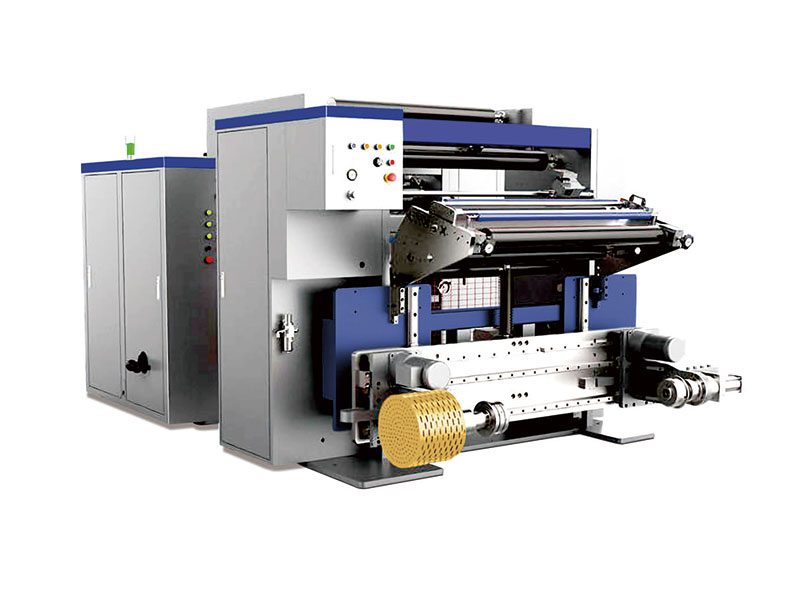 High Speed Slitting Machine
High Speed Slitting Machine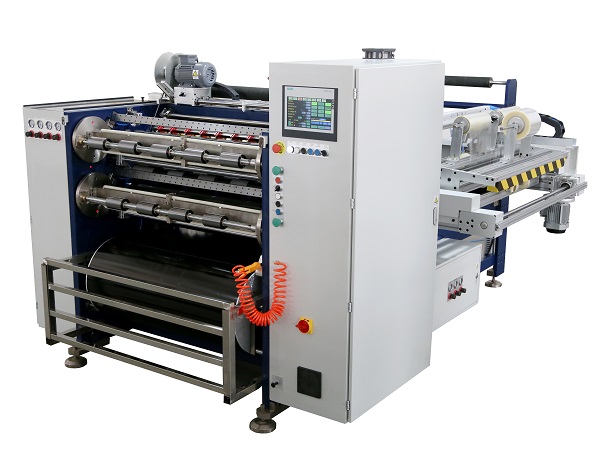 Automatic Thermal Transfer Ribbon Slitting Machine RSDS8 PLUS
Automatic Thermal Transfer Ribbon Slitting Machine RSDS8 PLUS

